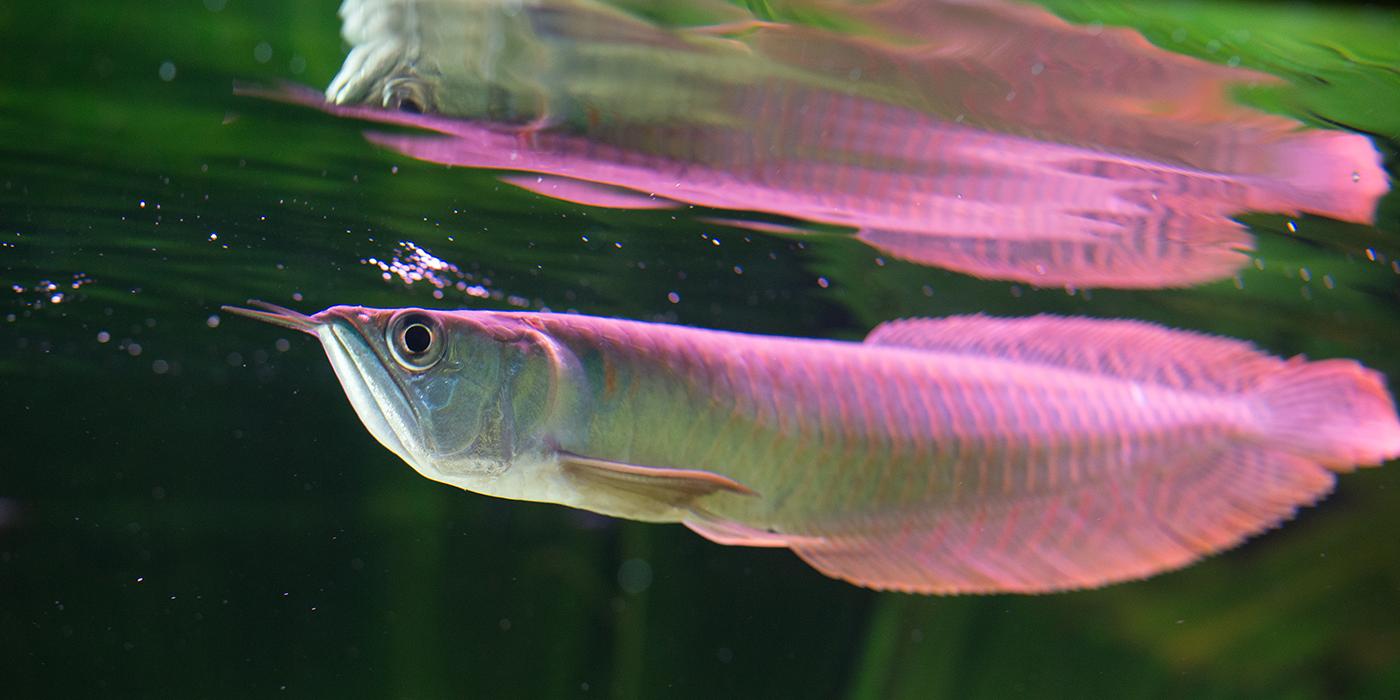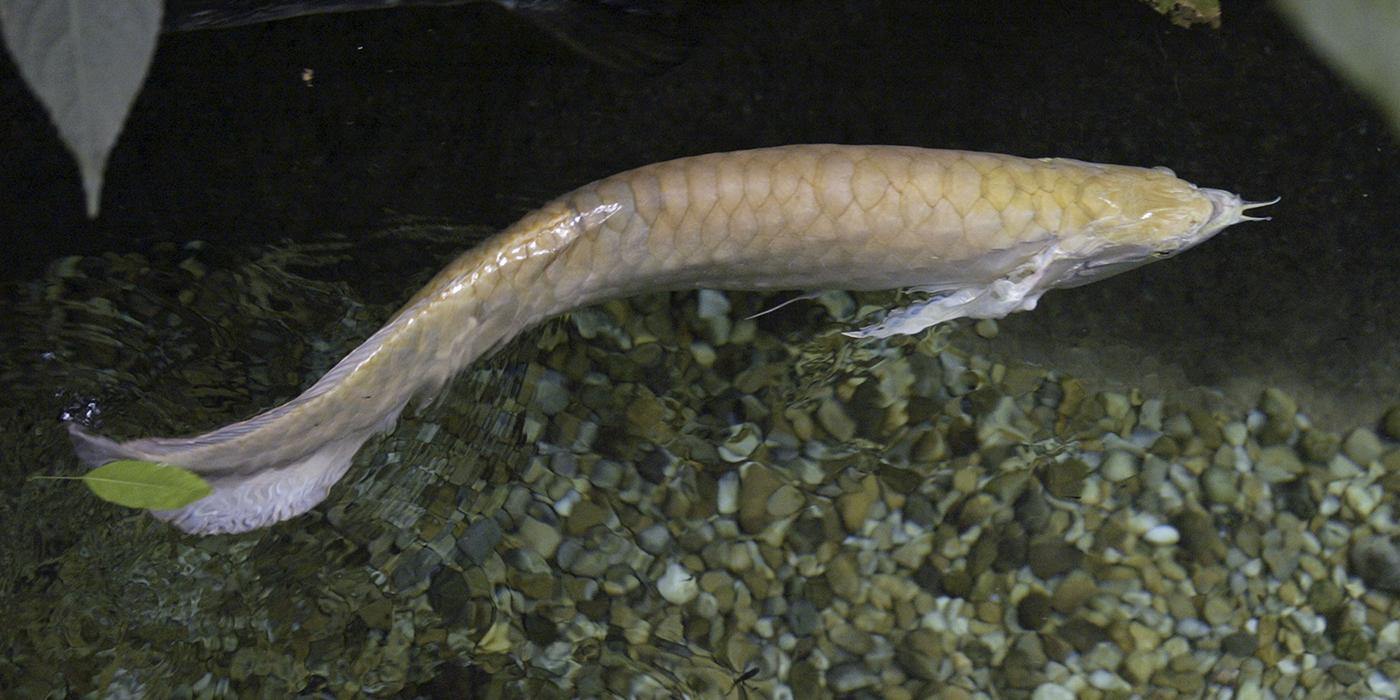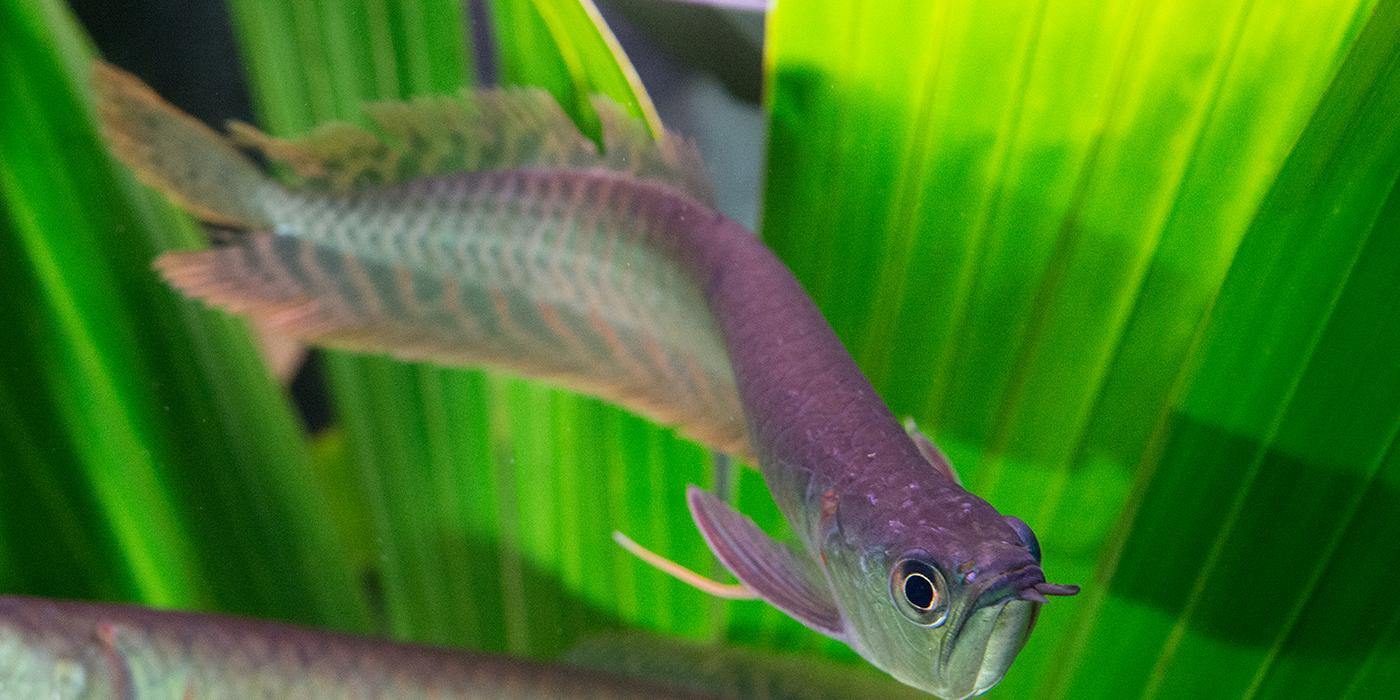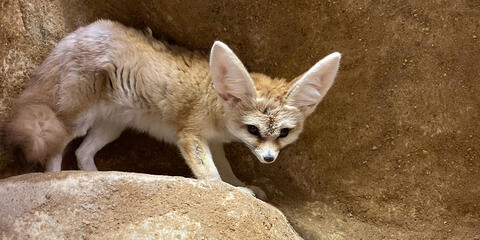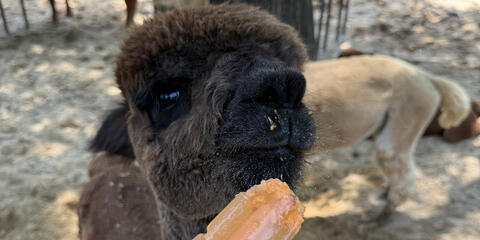The silver arowana (or arawana) is a freshwater fish native to the floodplains of the Amazon. It has a long body covered in large, pearly-silver scales. Large dorsal and anal fins extend down its body to the tail, and two barbels extend from the tip of its lower jaw.
Physical Description
The mouth is at the top of the body of the fish and opens in three pieces. Many oral bones bear teeth, including the jaw, palate, tongue and pharynx. Very large, pearly-silver scales cover their bodies. These scales shift to shades of red, blue and green as the fish ages. They have dorsal and anal fins that are almost fused with the caudal fin. Males are slenderer and have a longer anal fin. Arowanas have two barbells at the extremity of the lower jaw. While the adults are silver, juveniles have blue glints and a yellow-orange bar.
Size
Arowanas are long fish capable of reaching lengths of over 39 inches (100 centimeters).
Native Habitat
Arowanas are native to the Amazon drainage system and the western Orinoco, Rupununi and Essequibo systems of the Guianas. They live in both the whitewater and blackwater floodplains of the Amazon. In both types of water, they are most abundant in the flooded areas.
Lifespan
In human care, arowanas have lived beyond 10 years of age.
Food/Eating Habits
Arowanas are omnivorous, with a tendency to feed on fish at the surface. The superior position of the mouth allows them to capture their prey while swimming from below. They have a unique predatory behavior in that they usually stay parallel to a downed tree to hide before attacking prey, which usually involves jumping out of the water. They can catch large insects, other fish, crabs, snails, snakes and small birds in low hanging branches.
At the Smithsonian's National Zoo, arowanas eat aquatic gelatin diet, smelt, shrimp and a variety of invertebrates, such as insects and worms.
Reproduction and Development
Arowanas spawn at the beginning of the flood season, which is usually in December and January. Females produce a small number of large eggs. Males carry the eggs, larvae and early juveniles in their mouths until the yolk sac has been absorbed, which takes about two months.
Help this Species
- Choose your pets wisely, and do your research before bringing an animal home. Exotic animals don’t always make great pets. Many require special care and live for a long time. Tropical reptiles and small mammals are often traded internationally and may be victims of the illegal pet trade. Never release animals that have been kept as pets into the wild.
- Avoid single-use plastics, such as plastic bottles, bags and utensils. Choosing reusable options instead can help reduce plastic pollution.
- Are you a student? Did you love what you learned about this animal? Make it the topic of your next school project, or start a conservation club at your school. You'll learn even more and share the importance of saving species with classmates and teachers, too.

